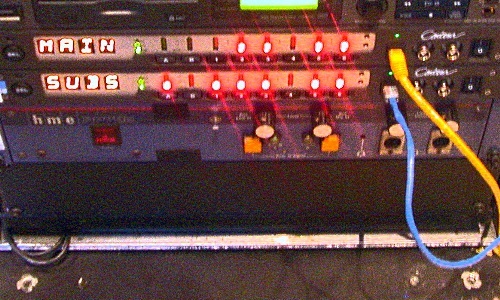I recently read this post on Pro Sound Web, and thought it would be great to share to our customers and friends. The original post can be found Here
Our panel of PSW veteran audio professionals discuss preferences for flat response or a response with a ‘spectral tilt’ towards the low-frequency (LF) end.

“When approaching the tonal balance of a sound system, do you tend to prefer a flat response or a response with a ‘spectral tilt’ towards the low-frequency (LF) end? How much of a ‘sub bump’ do you like to see?”
With those questions, our panel of veteran audio professionals is off and running…
Craig Leerman: I set up my PA systems differently depending on the gig. For corporate-type events I strive for a nice flat response in the PA with no low frequency emphasis. If I need a little more low end energy on a playback during the event I will use the channel EQ to emphasize the bass on the playback.
For acoustic, folk, classical, old school country, bluegrass and jazz music gigs I also set up the PA flat but on modern country, rock, hip-hop and rock shows I tend to bump the subs up a bit more as those genres of music are often bass heavy. With the subs thumping, I don’t have to use any channel EQ to get the bass happening, I can use the EQ to just tailor the sound of each instrument to get them to sit in the mix.
When I can, I also like to run the subwoofers off of an aux so I can just send the instruments I want to the subs like kick drum, bass guitar or organ. Aux fed subs give me a bit more control and keeps sounds I don’t want in the subs from muddying up the mix, like the low end from vocal plosives or stage noises that are transmitted through mic stands into the microphones.
Christopher Grimshaw: For live music, I like the system to be as flat as possible – whatever signal the desk is putting out, that’s what should be coming out of the speakers. Mixing can be difficult enough without having the PA acting as another FX unit, so once I’ve made sure the system is flat, I apply EQ to the channels that need it to get the sound that I want.
Not all events have live music, though. If I’m running the sound and part of the event requires background music, I tend to take a few dB out of the intelligibility range on that channel strip so that people can chat without the music getting in the way.
For events with DJs or other engineers coming in, I get them started with the system flat and (if necessary) help them get the sound to their taste. I think it’s all about what you’re used to. I started out in audio with home hi-fi and I listen to music on a flat system, so it feels natural to mix on a system that’s also flat.
Ken “Pooch” van Druten: Linearity is what I look for in a speaker system these days. I want my system to sound like a big pair of nearfields. So linear with balanced sub, final answer.
Erik Matlock: Personally, I still tend to step into the hotseat with a studio perspective. I’m primarily looking for accuracy. My standard routine involves comparing the house mix with my headphones and trying to match the sound fairly closely. I hate walking into a room and it sounds more like a subwoofer demonstration than a show.
If the artist leans toward bass-heavy tones, then sure, I want that to show up in the mix. Other than tweaking the system towards a fair representation of whatever the artist wants to sound like, I’m still going for mostly flat.
Ales Stefancic: When I approach a sound system and the desired “target curve,” I take into account the type of event and the material that will be played through the system. For spoken word as well as classical and folk music, I tend to prefer a flat response of the system with a natural drop in the high-frequency region and no sub bump. When it’s a rock concert, I try to tilt the response more to the LF side, with a LF region bump of about 4 to 6 dB below 50 to 70 Hz.
I generally do not like extreme sub bumps; I might only use them for some electronic music genres (EDM-type stuff). But when in doubt, or there’s a mixture of genres, a flatter response is always my preferred method of setting up a system.
Andrew Stone: I’ve always had better luck dialing in a PA to represent what the human ear seems to like hearing. At least what my ears like hearing! This is elevated low-end frequencies with gradually diminishing levels the higher up you go in the frequency spectrum.
Additionally, I’m usually not interested in seeing a sub bump because it generally doesn’t translate as sounding very musical to me. Dialing in the subs where they’re a natural extension of the low end PA response tends to feel much better once I get a mix pulled up.
Nicholas Radina: I always try to aim for a natural response – some may call this “flat” or “true.” The goal is to understand if it’s possible to create the neutral response, and if not, how to compensate. With the steady challenges of room response, loudspeaker positioning and audience location, I’d much rather start with the system exciting the space with as little extraneous influence as possible.
In regards to a sub bump, I think it solely depends on the style of music. Too often I hear such an uneven tilt of low end when it’s not necessary for the music. If this energy is required for impact and translation of the artist, then yes, the balance of the system should favor what’s needed.
Dave Natale: I’ve said many times that I have a very non-standard, unorthodox or just plain crazy way that I approach audio; however, it seems to have worked out for me. That said, I would not recommend that anyone adopt this technique as it may get you fired or worse.
As you may or may not know (or care), I use track 2 (“Gone Buttlefishin”) on the Sheffield Lab CD (#23) James Newton-Howard and Friends. (See Dave’s article here for more on this topic.)
I use a third-octave EQ with faders on it, like an old Klark-Teknik DN 27, DN 30/30, DN 360, or a TC Electronic 1128 with the 6032 remote head. I start with the 20, 30, 40, 50, 60 and 80 Hz faders on the graphic set to flat or zero, whichever you prefer, and the rest of the faders (100 Hz to 16 kHz) cut 15 dB or the maximum amount… pulled all the way down. With the EQ set this way what we’re hearing is the maximum amount of low end that the system can muster by virtue of everything but the low end being cut by 15 dB.
I start by listening to the Newton-Howard track through one side of the PA only. It can either be the left or the right side, depending on which side I’m closer to. I then add back in the remaining frequencies as I deem them necessary. It’s kind of like “seasoning to taste.”
I’m not a huge fan of 160, 315, and 630 Hz. These frequencies never did any drum in the known universe any good. My other least favorite higher frequencies are 2, 2.5 and 3.15 kHz. They just hurt your ears.
This technique has worked for me on all PA systems in all sorts of venues – from clubs to stadiums and larger – for the last 40 years. There is no rule book in audio, and if your style, whether it be conventional or unorthodox gets you there, then it works for you.
Samantha Potter: I aim for a flat response, but I find myself needing a little extra sub bump on occasion to push the low-end SPL. It varies so greatly from gig to gig, but I’d like to think I strive for a flat system response. In most situations, a sub bump is adding a really nice flavor to the mix without me having to individually adjust different channels (although putting the subs on an aux would compensate).
I don’t like doing too much of any one thing to the system tuning as I use that as a corrective approach. If I went in and the system was entirely flat, I would feel like I need to push my kick/bass/floor tom a little harder than normal. Perhaps this is our conditioning in this hyper-bass world we live in. I don’t mix for myself, though. I mix for the purpose and the audience.
Michael Lawrence: This is a tricky one because there’s a few different layers to it. First off, the PA is part of our transmission system. Once the mix leaves the console and crosses the McCarthy“Art/Science Line,” I don’t want anything downstream to alter or editorialize my signal; I just want it transmitted faithfully. This is a no-brainer for amplifiers and cables, but for some reason loudspeakers are still up for debate.
So to start with, I’ll take a flat, linear system that reproduces as closely as possible whatever I send it from my console – and does so over the entire audience area. As soon as we overlay that with the fact that music of most genres pretty consistently tends to have a spectrum that’s tilted towards the low, we see that the spectral tilt of a sound system becomes simply a matter of convenience: the FOH engineer is going to do whatever needs to be done to get the mix to sound a certain way, and it’s probably more convenient to tilt the whole PA rather than try to tilt everything in the mix.
This “self calibrating” aspect of the mix position means that it’s simply a game of how many filters are needed to accomplish a certain sound, and if we can do that with a filter on the entire system EQ rather than on each channel strip, that’s just simpler and easier.
So to quote another audio luminary, my final answer is, “it depends.”
